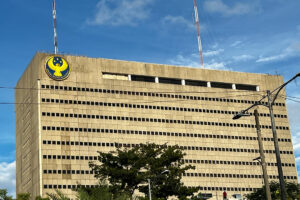TERM DEPOSIT yields went down on Thursday amid expectations of rate cuts by the Bangko Sentral ng Pilipinas (BSP) and US Federal Reserve in the coming months.
The BSP’s term deposit facility (TDF) attracted bids amounting to P164.441 billion on Thursday, above the P160 billion on the auction block as well as the P105.851 billion in bids seen a week ago for the same offer volume.
Broken down, tenders for the six-day papers reached P85.501 billion, slightly higher than the P80 billion auctioned off by the central bank. This was also well above the P40.096 billion in bids seen for the eight-day deposits offered the previous week.
Banks asked for yields ranging from 6.24% to 6.5%, a wider and lower band compared with the 6.4875% to 6.5215% seen a week ago. This caused the average rate of the one-week deposits to decline by 19.96 basis points (bps) to 6.3123% from 6.5119% previously.
Meanwhile, bids for the 13-day term deposits amounted to P78.94 billion, lower than the P80-billion offering but above the P65.755 billion in tenders recorded on Aug. 14.
Accepted rates ranged from 6.25% to 6.55%, also wider and lower than the 6.47% to 6.57% margin recorded a week ago. With this, the average rate for the two-week deposits decreased by 19.63 bps to 6.3477% from the 6.544% logged in the prior week’s auction of 14-day papers.
This week’s TDF tenors were adjusted from the usual seven-day and 14-day maturities as the BSP held the auction on a Thursday instead of Wednesday due to Aug. 21 initially being declared a holiday in observance of Ninoy Aquino Day. This special non-working day was moved to Friday (Aug. 23) by Malacañang last week.
Meanwhile, the BSP has not auctioned off 28-day term deposits for more than three years to give way to its weekly offerings of securities with the same tenor.
The term deposits and the 28-day bills are used by the central bank to mop up excess liquidity in the financial system and to better guide market rates.
TDF yields went down following expectations of monetary easing by the BSP and Fed in the months ahead, Rizal Commercial Banking Corp. Chief Economist Michael L. Ricafort said in a Viber message.
The BSP last week cut benchmark interest rates for the first time in almost four years to mark the start of a “calibrated” easing cycle amid an improving inflation and economic outlook, with its governor signaling at least one more reduction before the end of the year.
The Monetary Board reduced its target reverse repurchase rate by 25 bps to 6.25%, in line with the expectations of nine out of 16 analysts in a BusinessWorld poll.
Prior to the cut, the BSP kept its policy rate at an over 17-year high of 6.5% for six straight meetings following cumulative hikes worth 450 bps between May 2022 and October 2023 to rein in elevated inflation.
“With inflation on a target-consistent path, the current macroeconomic outlook supports a calibrated shift to a less restrictive monetary policy stance,” BSP Governor Eli M. Remolona, Jr. said at a briefing.
Mr. Remolona said they could cut rates by another 25 bps within the year. The Monetary Board’s remaining policy-setting meetings this year are on Oct. 17 and Dec. 19.
Analysts expect the BSP’s easing cycle to continue until next year amid stabilizing inflation, with at least 100 bps in rate cuts seen in 2025.
Meanwhile, the Federal Reserve appears to be very much on track for an interest rate cut in September after a “vast majority” of officials said such an action was likely, according to the minutes of the US central bank’s July 30-31 meeting, Reuters reported.
The minutes, which were released on Wednesday, even showed some policy makers would have been willing to reduce borrowing costs at last month’s gathering.
The policy-setting Federal Open Market Committee left its benchmark interest rate unchanged in the 5.25%-5.5% range on July 31, but opened the door to a cut at the Sept. 17-18 meeting.
Financial markets have been expecting the September meeting to kick off the Fed’s policy easing, with as much as a full percentage point worth of rate cuts expected by the end of this year.
With the Fed letting the data determine what happens with rates, central bank watchers are already contemplating the future scope of cuts and whether aggressive action is needed at the onset of the easing cycle.
Fed Chair Jerome H. Powell largely tipped off the likely outlook after the July policy meeting when he said “if we do get the data that we… hope we get, then a reduction in our policy rate could be on the table at the September meeting.”
Markets are likely to get an update of Mr. Powell’s views on Friday when he speaks at the Kansas City Fed’s annual research conference in Jackson Hole, Wyoming. A number of other Fed officials are also likely to weigh in on the outlook while attending the conference. — L.M.J.C. Jocson with Reuters














